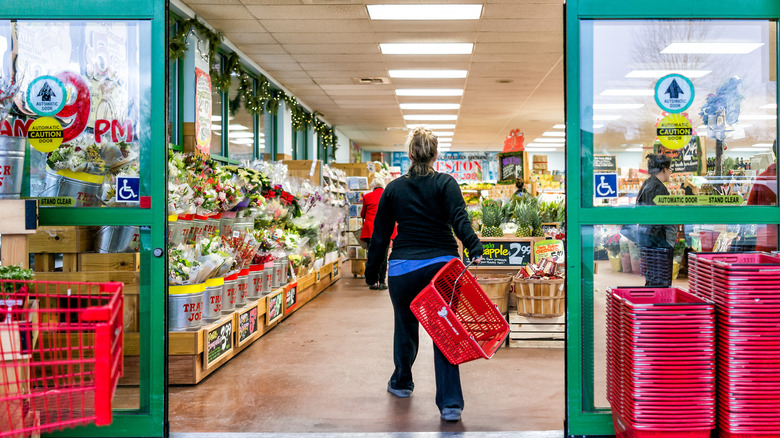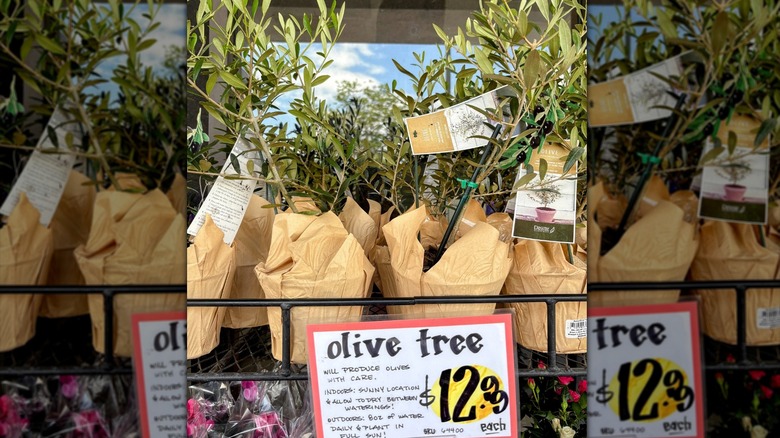Trader Joe's Fans Are Freaking Out Over The Return Of These Perfect Indoor Plants
You might know Trader Joe's for its beautiful bouquets you need in your home, but there's a new garden-related reason to stop in. TJ's fans on TikTok and Instagram are buzzing over reports that Trader Joe's has brought back its most perfect indoor plant: the mini olive tree with an ideal price of $12.99. These trees help you decorate your home with a Mediterranean style, especially when planted in pottery or other planters with a natural, earthy aesthetic. Now that the news is out, you might want to snap one up along with your favorite snack before you're greeted with bare shelves.
The mini olive tree is a good houseplant option, adding a bit of Mediterranean decor to your space. Best of all, after a few years of careful tending, it will produce a bounty of olives for your antipasto or other dishes. Once planted, they can contribute to air purification and creating a calm environment. Your tree can grow up to 4 to 6 feet, and some previous Trader Joe's shoppers report their trees from the retailer have reached this height. Buying one at Trader Joe's lets you enjoy a steal, as similar mini trees may go for anywhere from $20 to $99 dollars, depending on its size and vendor. If you've never cared for a mini olive tree before, there are a few pieces of essential information you should know.
Caring for your mini olive tree
It's easy to grow and care for your olive tree indoors. They need sunshine for at least six hours a day. You can also use a grow light to supplement light, if needed. Give it a large pot with plenty of room for the growing roots and adequate drainage in a good potting mix. Repotting is best in late winter or early spring when it leaves dormancy. Olive trees are naturally drought-tolerant, with minimal watering requirements. The store's tag advises to let it dry between watering sessions. Check to see if it needs watering by dipping your finger 1 inch deep into the soil, or by using a moisture meter. Then, if it's thirsty, give it a drink, but be careful to not overwater. It's fine to occasionally bottom-water your tree, but still hydrate it from the leaves down as well. Look for signs of overwatering or underwatering, including yellowing leaves.
Pest concerns for olive trees include spider mites, scale insects, aphids, and mealybugs, but can be treated with neem oil or insecticidal soap. One potential olive tree disease to look out for is the lesion-causing peacock leaf spot, which is the result of a fungus. You can recognize it by its dark spots that are sometimes ringed with yellow, and treat it with a fungicide. Another thing to look for is olive knot, which makes swellings on the tree's trunk, twigs, or branches. Olive trees contain oleuropein, a natural substance that isn't toxic, though it may cause effects after heavy ingestion, so it's best to keep trees out of reach of curious pets if they have a habit of munching on plants.

